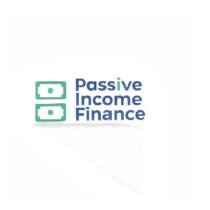Introduction
Budgeting is a crucial skill that everyone should master, especially beginners looking to gain control over their finances. Whether you’re aiming to save for a vacation, pay off debt, or invest for the future, creating a budget can help you achieve your financial goals. In this guide, we’ll walk you through the essentials of budgeting, practical strategies, and tips for scaling your income.
Understanding the Basics of Budgeting
Before diving into the nitty-gritty of budgeting, it’s important to understand what budgeting means. A budget is simply a plan for how you will spend your money. Here are some key components:
- Income: All sources of money you receive, including salary, side hustles, and passive income.
- Expenses: All the money you spend, which can be fixed (rent, utilities) or variable (entertainment, shopping).
- Savings: Money set aside for future use, emergencies, or investments.
Step 1: Calculate Your Income
The first step in creating a budget is to understand how much money you have coming in. This includes:
- Your salary or wages
- Any side hustles you may have
- Passive income sources
Be sure to use your net income (after taxes) to get an accurate picture of your available funds.
Step 2: Track Your Expenses
Tracking your expenses is vital. You can do this by:
- Keeping receipts and bills
- Using mobile apps or spreadsheets
- Reviewing bank statements
Group your expenses into categories to see where your money goes each month.
Step 3: Create Spending Categories
Once you have a clear picture of your income and expenses, create spending categories. Common categories include:
- Housing: Rent or mortgage payments, property taxes
- Utilities: Electricity, water, internet
- Food: Groceries and dining out
- Transportation: Gas, public transit, car payments
- Entertainment: Movies, hobbies, and subscriptions
Real-World Case Study: Sarah’s Budgeting Journey
Meet Sarah, a 28-year-old marketing professional who earns $60,000 annually. Sarah was struggling with her finances and often found herself living paycheck to paycheck. After realizing she needed to take control, she decided to create a budget. Here’s how she did it:
- Income: $3,750/month (after tax)
- Fixed Expenses: $1,200 (rent), $200 (utilities), $300 (car payment)
- Variable Expenses: $400 (groceries), $150 (dining out), $100 (entertainment)
- Savings: $500/month for emergencies and investments
After tracking her expenses for a few months, Sarah identified areas where she could cut back, such as dining out less and shopping for groceries more effectively. She also started a side hustle as a freelance graphic designer, earning an additional $600/month. Within a year, she had saved $6,000, which she used to invest in her future.
Step 4: Set Savings Goals
Now that you have a budget in place, it’s time to set savings goals. Consider the following:
- Emergency Fund: Aim for 3-6 months’ worth of expenses.
- Short-Term Goals: Save for vacations, a new car, or a home down payment.
- Long-Term Goals: Retirement savings or education funds for children.
Scaling Your Hustle
Once you have your budgeting down, consider scaling your income through side hustles. Here’s how:
- Hire Freelancers via Fiverr: If you have a business idea but lack certain skills, hire freelancers to assist with graphic design, content creation, or marketing.
- Automate with Free Tools: Use tools like Google Sheets for budget tracking or Canva for creating marketing materials to save time and money.
- Leverage Social Media: Promote your side hustle on platforms like Instagram and Facebook to reach a wider audience.
- Network: Join local groups or online communities related to your hustle for support and collaboration opportunities.
- Continuously Learn: Invest in your skills by taking online courses that can enhance your offerings and increase your income potential.
By taking these actionable steps, you can turn a side hustle into a significant source of income, paving the way for financial freedom.
Conclusion
Budgeting may seem daunting at first, but with the right approach and tools, it can become an empowering part of your financial journey. Remember, the key to successful budgeting is consistency and a willingness to adjust as your financial situation changes. By following the steps outlined in this guide, you can take control of your finances, save for future goals, and even scale your income through side hustles. Start today, and you’ll be well on your way to financial stability and independence. For more tips on how to earn money in 2025 and explore passive income strategies, stay tuned to our blog!
Boost your earnings with Robinhood Free (start investing with no fees!) or Fiverr Free (earn extra with freelance gigs!).
